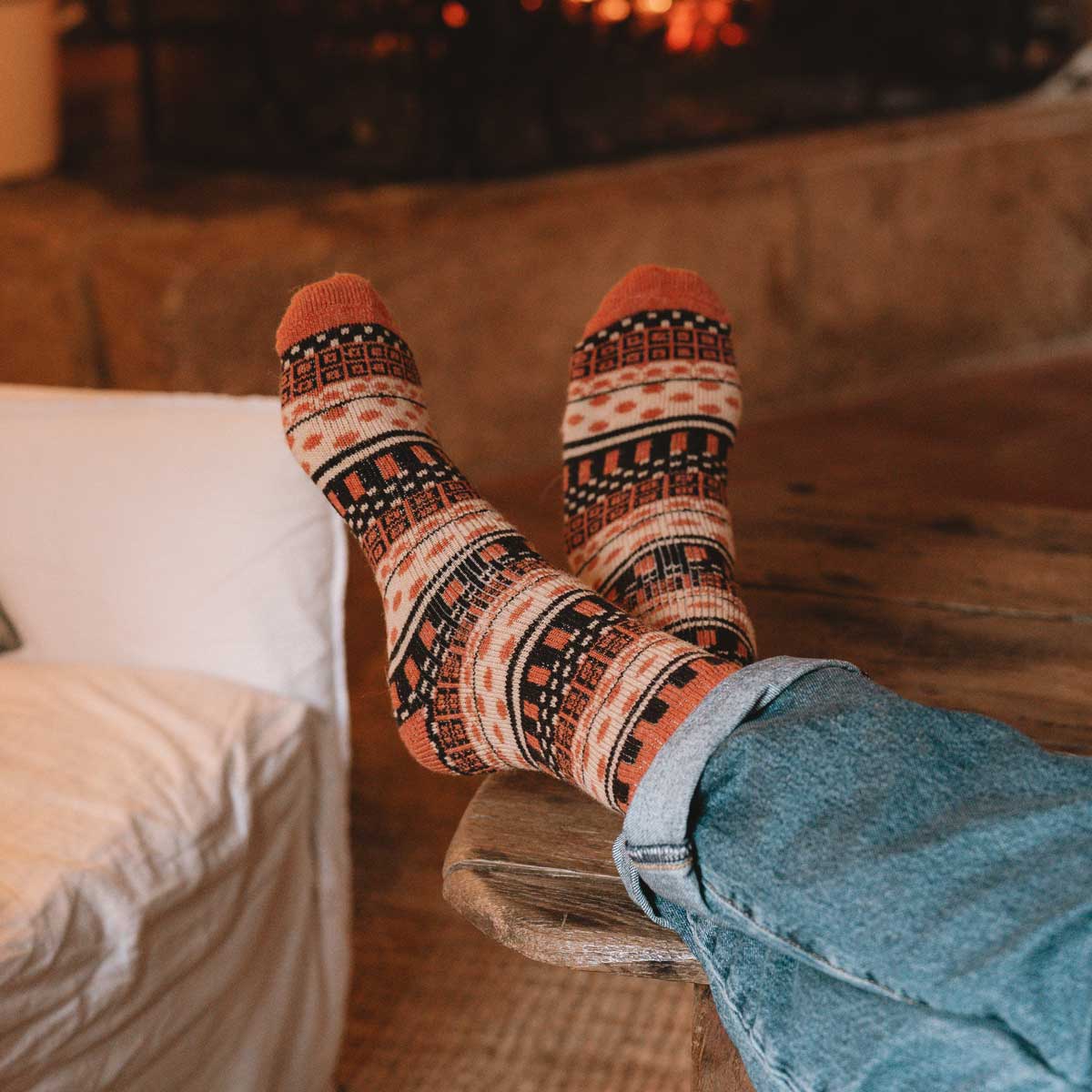As winter sets in and temperatures plunge, maintaining warmth in your feet is vital for both comfort and your overall health. Winter socks are specially designed to shield your feet from biting cold, dampness, and even frostbite during severe weather. But what makes these socks so effective at keeping your feet warm when the cold becomes intense? Let’s explore how winter socks work to provide this essential protection.
The Importance of Warm Feet in Winter
Your feet are one of the first areas to feel the cold because they are farthest from your core body temperature. When feet get cold, blood vessels constrict to preserve heat for vital organs, leading to discomfort, numbness, or even frostbite in severe cases. Wearing proper winter socks is not just about comfort—it is a key preventive measure to maintain healthy circulation and prevent cold-related injuries.

Material Matters: Why Wool Socks Dominate Winter Wear
One of the primary reasons winter socks keep feet warm is the material used. Wool, especially Merino wool, is widely recognized as the best fabric for winter socks because of its unique properties:
-
Natural Insulation: Wool fibers have a natural crimp and hollow core that trap air, creating an insulating layer of warmth around your feet.
-
Moisture Wicking: Wool can absorb moisture vapor without feeling wet, helping to keep feet dry even during sweat or snow exposure.
-
Breathability: Wool allows airflow, preventing overheating while maintaining warmth.
-
Odor Resistance: The natural properties of wool reduce bacterial growth, preventing odor even after prolonged wear.
Compared to cotton or synthetic fibers, wool socks provide superior warmth, comfort, and durability, making them ideal for winter conditions.
How Winter Socks Trap Heat: The Science of Insulation
Winter socks keep your feet warm by trapping a layer of warm air close to your skin. This layer acts as insulation, reducing heat loss to the cold environment. The thickness of the sock and the loftiness of the material create this air pocket. Thermal socks, often designed with extra cushioning, enhance this insulation effect further.
Additionally, the structure of wool fibers contributes to insulation. The tiny air pockets within wool fibers slow down heat transfer, meaning your body heat stays trapped inside the sock, keeping your feet cozy for longer.
Moisture Management and Its Role in Warmth
Moisture is a major enemy of warmth. Wet feet can lose heat rapidly, causing discomfort and increasing the risk of cold injuries. Winter socks, particularly wool and synthetic blends, excel at moisture management by pulling sweat away from the skin and releasing it to the outer layers where it can evaporate.
This moisture-wicking capability is crucial during physical activity in cold weather, such as hiking, skiing, or snowboarding. Keeping feet dry ensures the insulation remains effective and prevents the chilling effect of damp fabric against the skin.
Proper Fit and Layering for Maximum Warmth
The effectiveness of winter socks also depends on their fit. Socks that are too tight can restrict circulation, reducing warmth, while overly loose socks can allow cold air to enter. A snug yet comfortable fit ensures optimal heat retention.
In extremely cold conditions, some people layer thin moisture-wicking socks beneath thicker wool socks to combine moisture management and insulation. However, layering socks should be done carefully to avoid constriction.
Specialized Winter Socks for Men and Women
Winter socks for men and women are often designed with specific considerations such as size, cushioning, and arch support. For men, socks may feature reinforced heels and toes for durability during outdoor activities. Women’s winter socks often incorporate softer materials and varied patterns without compromising warmth.
Both styles emphasize thermal protection and moisture control, ensuring feet stay warm and dry regardless of gender or activity.
Additional Features That Enhance Winter Sock Performance
Some winter socks include features such as:
-
Compression zones to improve blood flow and reduce fatigue.
-
Reinforced areas to withstand wear and tear.
-
Seamless toes to prevent blisters and irritation.
-
Anti-slip grips on the sole for safety on icy surfaces.
These innovations improve comfort and functionality, especially in extreme cold weather.

Conclusion
Winter socks keep your feet warm in extreme cold through a combination of high-quality insulating materials like wool, moisture-wicking technology, and thoughtful design that traps heat while managing sweat. Choosing the right winter socks with proper fit, insulation, and durability is essential for comfort, performance, and foot health during cold months. Whether you need winter socks for men or women, investing in quality wool or thermal socks will ensure your feet stay warm and dry no matter how harsh the conditions.
FAQs
Can cotton socks keep my feet warm in winter?
Cotton socks are not ideal for winter because they retain moisture and lose insulating properties when wet, leading to cold and discomfort.
How often should I replace my winter socks?
Winter socks should be replaced when they lose elasticity, develop holes, or no longer provide adequate cushioning and warmth, typically every 6-12 months depending on use.
Are wool socks itchy?
High-quality Merino wool socks are soft and comfortable, causing little to no itchiness compared to traditional wool.
Can I wear winter socks for everyday use or just outdoor activities?
Winter socks are versatile and can be worn daily in cold climates or during outdoor activities requiring extra warmth.
How do I care for wool winter socks?
Wash wool socks gently in cold water using mild detergent and air dry to maintain their shape and insulating properties.









